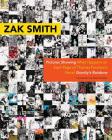No, regardless of what it looks like, I haven’t given up reading. I just got lazy and stopped posting about it. Well, here’s a quick one.
I think the last thing I posted about was JR by William Gaddis. Since then, I finished my quest to read all 37 Shakespeare plays, plus I read all the Civil Reads selections… what were they? Heart of Darkness by Joseph Conrad, Vintage Munro, a collection of stories by Alice Munro, Junky by William S. Burroughs, The Handmaid’s Tale by Margaret Atwood, and But Beautiful: A Book about Jazz by Geoff Dyer (And it was. Beautiful. Go buy it and read it right now.). Also, of course, the second in Lemony Snicket’s All the Wrong Questions series, because, yes, I’m just a big kid.
Patrick suggested I read The Drunken Botanist by Amy Stewart, and, since he’s basically a genius to me, I always take his advice. The story here is… As you might know, Patrick has a column on the Riverfront Times Gut Check blog called Drunken Vegan, in which he writes about cocktails, often from a vegan perspective. Patrick also loves books. So it makes sense that he would buy several books on the subject of those irresistibly intoxicating imbibables—you know, for R&D.
The Drunken Botanist is really interesting because it’s a fun to read referencey work about plants used in booze. It’s organized in sections, and alphabetically by the plant’s common name within the section. I’m in the “most common” (that’s the first) section right now. It’s not a super comprehensive botany book or anything, and doesn’t claim or pretend to be. What it is, is a work for the GP, like I am, who know a little about plants, but not a lot, who are interested in a little history and “how it’s used” and “how you can grow it, if it’s practical,” but not a ton of technical stuff or jargon. An interesting read that makes me want to grow every plant she talks about. Fascinating facts I never new, like that sugar beets are probably at the start of just about every kind of liquor, because they’re used in yeast cultivation. And that the sugar from beets isn’t very different than the sugar from sugarcane. Or that all kinds of liquors have certain restrictions w/r/t their alcohol percentage or percentage that has to be made up of a particular ingredient for them to bear their names.
There are little recipes for cocktails throughout as well. Mostly common (or at least I’ve heard of them, so I think they’re common) cocktails. I don’t mean boring, here. Not at all. These are cocktails in which the liquor in question is highlighted beautifully. Or sometimes even the plant used to make the liquor is highlighted.
It’s a pretty book, too. Designed. No dust jacket over the decorated hard cover. Nice feeling pages, with just the right amount of decoration where it works. You can read it straight through, as I am, or you can flip to a plant that interests you at that moment. It’ll definitely be something we keep on our bar shelf and refer to often.




















































